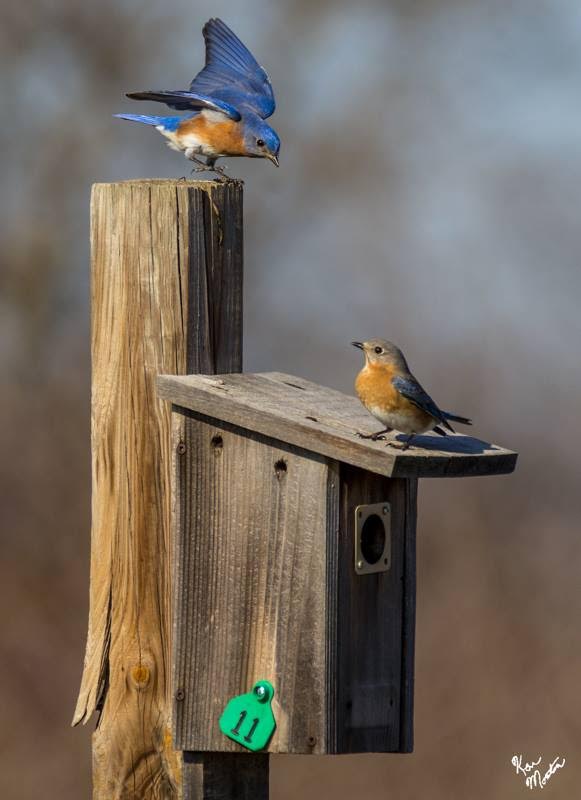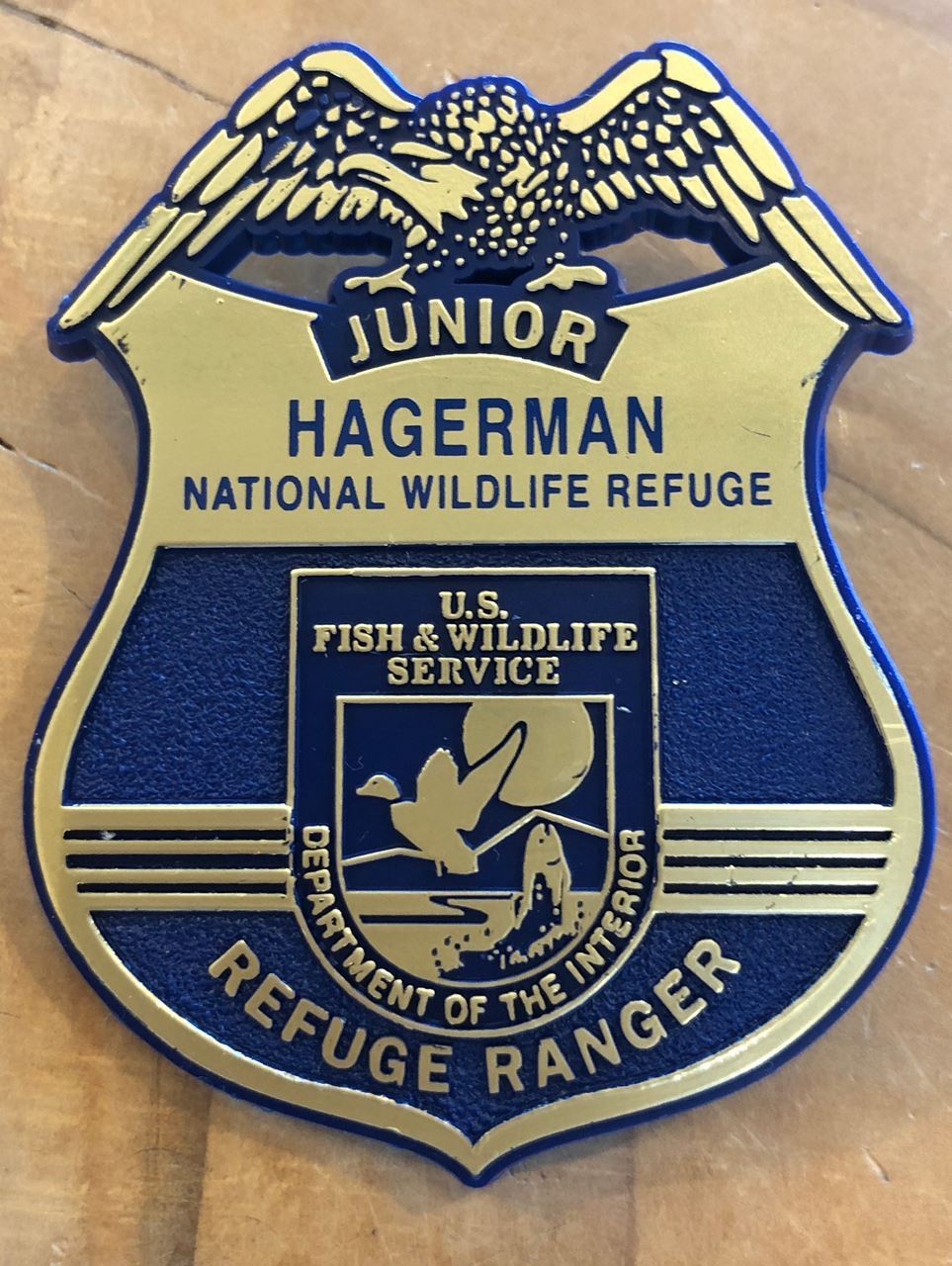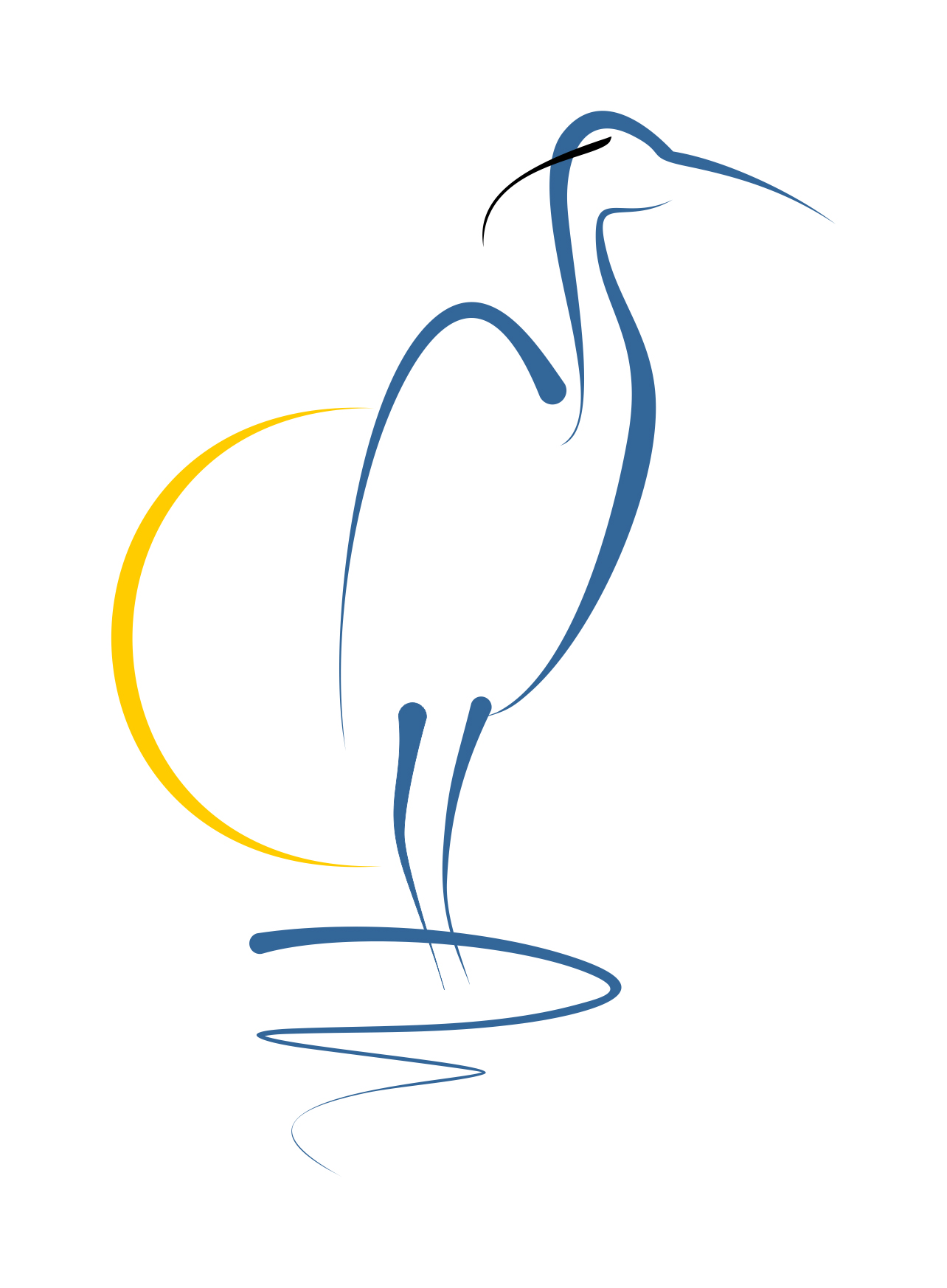|
We have begun fall migration season at Hagerman NWR. Over the months of September through November, thousands of individual birds of hundreds of species will be moving through our area. Some will be leaving to go south to overwinter in Central America or South America. Others will end their trips here and stay with us for the winter. The geese are beginning to arrive and will be in maximum numbers through November. They will stay as long as the wheat holds out. Thanks to Adopt-a-Goose, we were able to plant all the fields that used to be planted annually. Timing was perfect; the last field was planted the day before the government shutdown. We got a little rain to start the sprouts, but now we need some heavier rain to continue strong growth so that there is enough for the geese to eat. Those of you with knowledge of rain dances need to start working now so that the sprouts don’t die from lack of water.
The shorebirds that migrate through have been already and many have left. The early
migrants were adults who failed to raise young or those that had finished. Now the young of the year are moving south, mostly on their own. We still do not know how they find their way with no adults to lead them. We do know that several fail. Some of the strangest vagrants of the year are young sandpipers and plovers who end up in entirely wrong parts of the world. For instance, last year we had a Red Phalarope stay for a few weeks. This is a bird that should have stayed at sea. It might logically go to ground along a coast, but the center of the continent is just wrong. We couldn’t tell its age, but I’ll bet it was a young bird of the year. Red-necked Phalarope by Pam Rendall-Bass | Adopt-A-Nestbox On Sale Now! Photo Club Contest Results The Little Sit Will proceed despite the shutdown Sponsor the Friends With Membership Subscribe to Our Monthly Featherless Flyer |
Geese are not the only waterfowl that are coming. The ducks have just started to arrive and will be here in large numbers in just a few weeks. Dabbling ducks like Northern Shovelers and Northern Pintails are already trickling in to the shallow impoundments. Many are still in their eclipse plumages. Ducks molt shortly after breeding, and both sexes become drab and brown with streaks. This allows them to camouflage themselves in the marshes because ducks molt all of their flight feathers more or less at once. This means they are incapable of flight for a week or two and need to be able to hide from predators. |
A second molt occurs in midwinter. They can afford to grow new feathers then, as they are mostly lounging in safe winter locations with plenty of food. Hagerman NWR certainly provides that, but so does all of Lake Texoma and surrounding lakes and ponds. Males grow their bright mating plumage during this molt, while females generally remain drab. Pair formation begins once they arrive on their winter grounds, and the two will remain paired for the entire spring and first part of |
summer until breeding has finished. Successful pairs may remain paired for the entire next year, but those who fail to breed will definitely divorce and seek new mates in the winter.
Diving ducks tend to arrive later in the winter, mid-November through December. They finish the fall molt before moving south, so it is rare for us to see them in eclipse. Some, like the Ruddy Duck, break that rule and spend all winter in their less bright plumage, molting into breeding plumage only for the breeding season. Rafting ducks—those that form very large groups out in deep water—stay here only for a few days before heading south to locations like Copano Bay. However, some birds of these species will remain local and can be found in places like the deep-water impoundment north of Egret Road, Dean Gilbert Lake in Pecan Grove Park, or around Eisenhower State Park. On a good day, the deep-water impoundment may hold Ruddy Ducks, Common Goldeneye, Canvasback, Lesser Scaup, Redhead, and Ring-necked Duck. We’ve even had rare birds like Long-tailed Duck and Surf Scoter show up occasionally. Photo by Chris Sanders But it’s the geese that are most spectacular. In late November and early December, we usually have at least 5,000 white geese at the refuge and often 7,000 or 8,000. If we get good autumn rains that support wheat growth, those birds will stay until mid-January or even all winter. In bad years, like last year, they eat all the wheat faster than it can grow and leave around Christmas-time to go farther south and feed in the fields west of Houston and all along the Texas coast to Mexico. White geese come in two species: the Snow Goose and its smaller cousin, the Ross’ Goose. While most of them are all white except for black wing feathers, both species have a second color morph known as Blue Goose. Blue morph geese are darkish brown or bluish brown with white heads. They are not different species than their white flock-mates, just different colors—similar to blonde and brunette humans. Blue Snow Geese are relatively common, maybe 20–30% of all the Snows. Blue Ross’ Geese are very rare at HNWR. We rarely see more than one or two in a year. Snow Geese are larger than Ross’ Geese. Ross’ have shorter necks, smaller bills, and rounder heads, making them look “cuter.” Snow Geese are Goths; they wear black lipstick. Ross’ lack the black lines on their gapes and have warty greenish skin at the base of their bills. |
|
Snow Goose with "lipstick" by Chelsi Stapleton Ross Goose by Stephenie Hill Gillen |
There are also dark geese. Most of them are Canada Geese (please, do not say Canadian Geese), but some are White-fronted Geese and Cackling Geese. There are several different subspecies of Canada Geese, each one a different size. In 2003, studies of DNA indicated that the four smallest subspecies were more closely related to each other and hardly related to the larger ones at all. The American Ornithologists’ Union declared them a different species—thus, the Cackling Goose. Cackling Geese with Snow Geese by Jack Chiles Cackling Geese are smaller than Canadas, with shorter necks and shorter bills. They differ from Canadas about how Ross’ differ from Snows. Cacklers also look like they have bigger jowls than Canadas. The smallest Cacklers are barely bigger than Mallards and can be distinguished very easily. Unfortunately, we don’t get that subspecies. We get the largest subspecies of Cacklers and the smallest subspecies of Canadas, so it takes a little skill and experience to identify them. There’s a lot to see at the refuge, even in winter. Get yourself out there and spend some quality time getting to know your neighbors. You won’t regret it. |
Refuge Update:
The Refuge HQ and Visitor Center are closed due to the federal government shutdown. All scheduled events are postponed until the government re-opens. Refuge roads, trails, lands and outdoor restrooms remain open to the public at this time. Big Game Hunt Public Safety Notice Hunting activity associated with the Big Game Hunt will be occurring at Hagerman National Wildlife Refuge from Nov 21-23, Dec 05-07. Visitors are encouraged to remain aware of their surroundings, wear visible clothing, and follow all posted safety signs and guidance while on the refuge. Refuge staff appreciate your cooperation in ensuring a safe experience for hunters and visitors alike.
Meyers Branch, Harris Creek and Big Mineral Units will be affected by the deer hunts. |
|
The perfect Christmas gift for the bird Lover in your family: The Adopt-A-Nestbox Sale has begun!
Each year, the Friends of Hagerman offers a special way to support the Eastern Bluebird population and learn all about these cheerful little birds through the Adopt-A-Nestbox Program. When you adopt a nestbox, you’ll get to name your box and visit it along one of Hagerman’s hiking trails as often as you like. During nesting season, you’ll receive weekly email updates with a photo from inside your nestbox and a short note about its stage of development. It’s fun, educational, and makes a wonderful Christmas gift! Each adoption is $50 per nestbox, helping to maintain Hagerman’s impressive Bluebird Trail of 45 boxes across the refuge. Due to high demand and limited availability, adoptions are limited to three nestboxes per person. Support the bluebirds—and share the joy of nature this season! |
Plant of the Month: Zexmenia By: Amber Grubb
Common names: Orange Zexmenia, Rough Zexmenia, Devils River, Orange Wedelia, Hairy Wedelia, Texas Creeping Oxeye. Botanical name: Wedelia acapulcensis var. hispida. Plant family: Asteraceae, the Aster Family Host Plant for: Bordered Patch Butterfly This Texas native perennial blooms from April to October in my garden in Grayson County and is one of my favorite plants in my Native Garden Scape. Zexmenia is an easy-to-grow small shrub made up of tangled, thin creeping woody stems. It is about 2' tall x 3' wide and spreads by dropping roots from its woody stems. The stems have small grayish to green foliage that are rough textured and the blooms are a continual production of small one inch wide yellow/orange daisies. Zexmenia is an evergreen in warmer parts of Texas, but dies back in colder areas such as Grayson County. Zexmenia will grow in loam, sand, limestone, caliche, and clay soils that are well drained. It can grow in sun and part shade. It does not grow fast but it will live a long life and is easy to grow. One of the excellent features is that it will thrive during extended months of dry, hot weather. In the spring it blends beautifully with Columbine. In Summer it complements Purple Cone Flower, Rock Rose, Turks Cap, and Henry Duelberg Salvia. In the heat of August, it has abundant blooms that mix with Greggs Blue Mistflower to attract so many pollinators. It is a host plant for the bordered patch butterfly. Zexmenia growth from March to September from my Texas Native Garden: |
Websites for more information: |
Left to Right: Wayne Meyer, Nancy Riggs, Jack Chiles, and Mike Petrick Each Tuesday a team of experienced birders, including Master Naturalist Jack Chiles, traverse 35 miles of refuge roads and hiking trails, documenting every bird they encounter. This Bird Census is reported to The Cornell Lab of Ornithology for use in research, and each week we will bring you a link to their actual bird count, and a summary of their adventures.
See the rest of Jack's notes and the latest Bird Census Results |
The Photo Club and Photo Contest Results Photo Club events and the announcement of contest winners are on hold until the government shutdown ends. However, members of the Friends of Hagerman who are subscribed to the Photo Club mailing list may receive a virtual preview of the results if the shutdown continues beyond mid-November. Not a member yet? Join the Friends of Hagerman today! |
| Puddles' Craft Corner By Cindy Steele, Master Naturalist |
Talkin’ Turkey!
Welcome back to Puddles’ Craft Corner. Gobble, Gobble! When we think of turkeys we often think about the Fall season and the Thanksgiving holiday. Who doesn’t remember making fun turkey crafts in school while anticipating our Thanksgiving school break and the smell of turkey cooking in the oven? But turkeys aren’t just for Thanksgiving. They are an interesting species of birds. Turkeys are one of most popular and recognizable birds in the United States. In fact, it was almost our national bird. As the story goes, Benjamin Franklin wanted the national bird to be the wild turkey rather than the bald eagle. Some scholars say this is true and others say it’s a myth. Whichever is true, turkeys are definitely an American icon! To learn more, check out these fun turkey facts!
What is a Turkey? A turkey is a large bird with many interesting facts, such as their ability to run fast, fly short distances, and their social nature. Male turkeys, called toms, have colorful feathers and make a "gobble" sound, while females are called hens. They live in groups called flocks, or rafters, and eat seeds, berries, nuts, and insects.
What Do Turkeys Look Like? Male turkeys are larger than female turkeys. They weigh between 8-24 pounds and are about 4ft long. Female turkeys weigh between 7-16 pounds and are about 3ft long. Adult turkeys have around 3,500 feathers.
Parts of a turkey
- Wattle- The flap of the skin under the turkey chin. It is reddish in color. The wattle turns bright red when a turkey anxious or worried and when he is attracting a mate.
- Spur- A spike above each foot. • Caruncle – The reddish growth on a turkey head and upper neck. The fleshy bumps on the turkey's head and neck.
- Tail Fan – Long feathers behind the turkey
- Beards - A bundle of long feathers on turkey’s chest
- Bill – Hard, sharp beak
Can Turkeys Fly?
Have you even seen a turkey flying through the sky? Maybe you have, that is because the answer to this question is yes, turkeys can fly…well sometimes. Wild turkeys can fly. Wild turkeys can fly up to speeds of fifty-five miles per hour for short distances. Domesticated turkeys (turkeys that live on farms) usually can’t fly. This is because they are usually too heavy to fly. Both wild and domesticated turkeys can also run fast. They can run at speeds up to twenty-five miles per hour.
What Do Turkeys Eat?
Turkeys are omnivores meaning they eat both plants and animals. Turkeys eat nuts, seeds, fruits, berries, insects, small reptiles, and...
Junior Ranger Program: Advanced and Intermediate
|
| The Junior Ranger Pledge As a Junior Ranger at Hagerman National Wildlife Refuge, I pledge to protect outdoor creatures small, big and huge. To keep the water, air and land clean. To make enjoying nature a routine. I will share my new skills with family and friends. When people and nature work together, everybody wins! |
Meet Jack and the Bird Census Team and learn how to identify the birds of North Texas while enjoying the beautiful sunrise over Lake Texoma! Modeled after Cornell's national "Big Sit" event, a group of dedicated birders invite you to join them at sunrise to conduct a bird count as multiple species fly to the water and the surrounding land to feed. Leaders will bring spotting scopes and will provide tips for identification of the many species you will see. This event lasts a couple of hours, but all are welcome to come and go as they please. Participants are advised to bring a chair, binoculars and water. The First Saturday of every month, beginning 30 minutes before sunrise. |
Sunrise at the Little Sit by Laurie Sheppard | Photo by Cathy Van Bebber |
Location: H Pad, Sadler, Texas 76264 (H Pad is in Sadler, but it is part of the refuge) GPS Coordinates: 33.734961, -96.780582
|
|
Sponsor the Friends of Hagerman NWR with a Membership
Sponsors Enable the Friends to…
Join Today! Memberships available for $20 |
| Thank You To Our Contributors: Jack Chiles, Stephenie Hill Gillen, Amber Grubb, Laurie Sheppard, Cindy Steele, Wayne Meyer, Pam Rendall-Bass, Chelsi Stapleton, Mayve Strong, Elaine Ward Refuge Manager: Kathy Whaley Acting Deputy Refuge Manager: Mary Maddux Visitor Services Manager: Spencer Beard Friends of Hagerman NWR Foundation 6465 Refuge Road, Sherman, TX 75092 Phone: 903-786-2826 Join us on Facebook: |
Search for any word--do not use quotes for phrases |
Kroger: Stop by the customer service desk at Kroger and link your Kroger Card to the Friends of Hagerman: the Friends will get rewards for every dollar you spend, at no cost to you.
Please add info@friendsofhagerman.org to your contacts to ensure delivery of registration confirmations, account information and the Featherless Flyer
See you at the refuge!





















